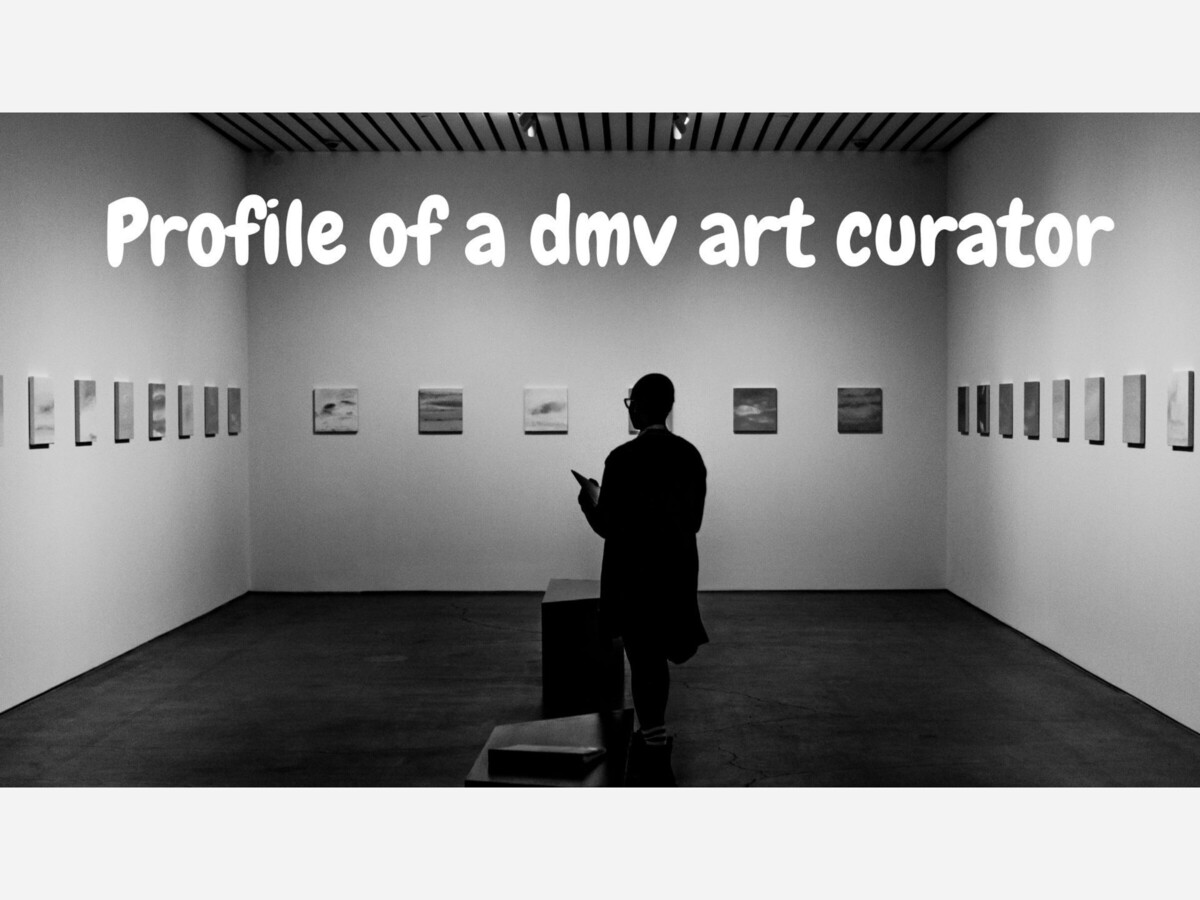Image


In the vibrant cultural landscape of the DMV, art curators play an essential role in shaping the community's connection to visual arts. These dedicated professionals are the gatekeepers of artistic expression, responsible for selecting, organizing, and presenting works of art that reflect the diverse experiences and perspectives of the region. This profile explores the life and work of a local art curator, shedding light on their responsibilities, challenges, and contributions to the local art scene.
Who is a Curator?
A curator is often seen as a behind-the-scenes orchestrator of exhibitions and collections in museums, galleries, and cultural institutions. They are experts in their field, whether it be in contemporary art, historical artifacts, or a specific cultural tradition. Beyond the walls of the institutions they serve, curators are influential in fostering public understanding and appreciation of art. They negotiate the purchase, sale, and loan of collections, conduct research, and work closely with artists to bring their visions to life in a public setting.
The Role of a Curator in the Community
In the DMV area, curators hold a particularly vital role in bridging the gap between the local community and the broader art world. They are tasked with curating exhibitions that not only display art but also tell stories, provoke thought, and inspire dialogue. For instance, a curator at the DC Arts Center might focus on underrepresented artists, providing them with a platform to showcase their work and engage with the community. This effort is part of broader initiatives like the Curatorial Initiative, which reflects the Center's commitment to fostering inclusivity in the arts.
Curators are also educators, offering insights into the historical and cultural contexts of the works they present. They organize public programs, lead tours, and write exhibition catalogs that help the audience delve deeper into the art on display. Their work often involves collaboration with other cultural institutions, ensuring that the exhibitions they curate are part of a larger conversation about art and society.
A Day in the Life: The Responsibilities of a Curator
The daily life of a curator is a blend of creative and administrative tasks. They spend their time researching artists and artworks, planning exhibitions, and coordinating with a team of designers, educators, and conservators. A curator at a major institution like the Hirshhorn Museum and Sculpture Garden, for example, might spend months, if not years, planning a major exhibition that will draw visitors from across the country. This process involves everything from selecting the artworks and designing the exhibition space to writing interpretive texts and organizing public programming.
Curators also play a critical role in the maintenance and growth of their institution's collection. They are responsible for acquiring new works, whether through purchase, donation, or loan, and ensuring that these pieces are properly cared for. This aspect of the job requires a deep understanding of art conservation techniques and a keen eye for works that will resonate with the institution's audience.
Challenges and Opportunities
The role of a curator is not without its challenges. One of the most significant is the need to balance artistic vision with institutional constraints, such as budget limitations and the need to attract a broad audience. Curators must also navigate the complex dynamics of the art world, where issues of representation, equity, and cultural appropriation are increasingly at the forefront.
However, these challenges also present opportunities for curators to innovate and push the boundaries of traditional exhibition practices. In the DMV, curators are increasingly exploring digital platforms to reach new audiences, experimenting with interactive and immersive experiences that bring art to life in novel ways.
A Local Perspective: Sarah Gordon
Sarah Gordon, a prominent art curator based in Washington, D.C., exemplifies the dynamic role of curators in the DMV. As the director of a major arts institution, Gordon oversees a collection of nearly 3,000 pieces of artwork. Her curatorial philosophy centers on creating accessible and engaging exhibitions that reflect the diverse voices of the community. Gordon's approach to curating is deeply rooted in her belief that art should be a vehicle for social change, a perspective that informs every aspect of her work.
In a recent interview, Gordon described her role as one that requires both a deep knowledge of art history and a commitment to public service. "Being a curator is about more than just selecting beautiful objects," she said. "It's about creating spaces where people can come together to explore, learn, and be inspired by the world around them."
Art curators like Sarah Gordon are essential to the cultural fabric of the DMV. They are the stewards of artistic heritage, the innovators of exhibition design, and the advocates for artists and audiences alike. Through their work, they ensure that art remains a vital part of the community, accessible to all and reflective of the rich diversity of the region. As the DMV continues to evolve, the role of the curator will undoubtedly remain crucial in shaping the future of art in the area.